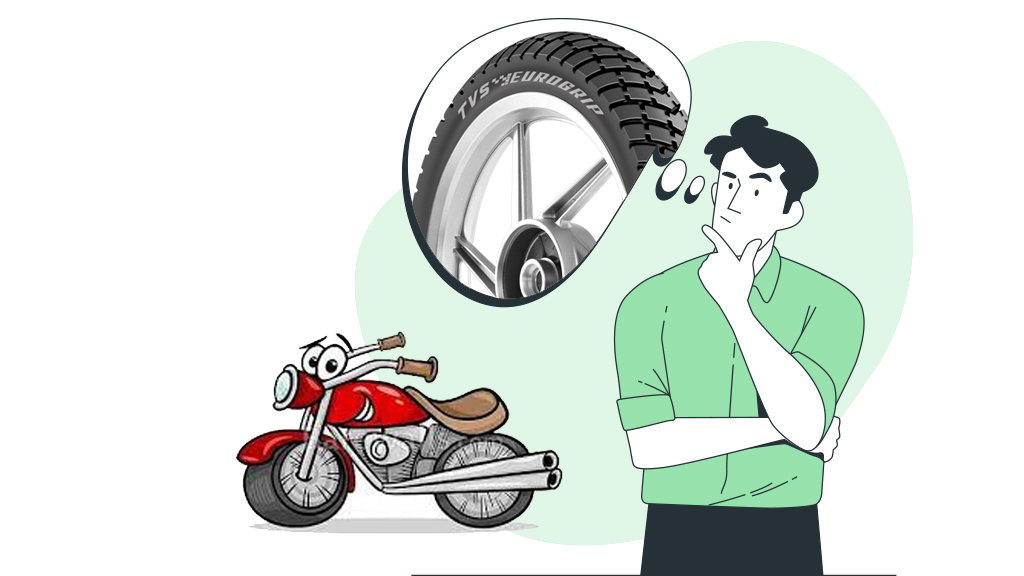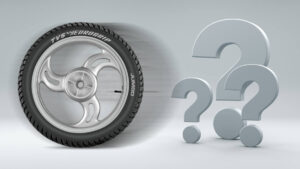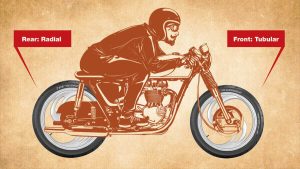In the new times, it has been seen that two-wheeler purchasers have become altogether more mindful of safety. Be that as it may, when you talk about security, one begins imagining the safety functions, manufacturing quality and others. So is the safety confined uniquely to such variables, or is there something else? Indeed, there is, and it is the tyres of a vehicle. Tyres are the primary contact fix to the street surface, thus a great deal relies upon the upkeep of the tyres and the way that they need replacement after a specific period.
Generally, contingent on the type of two-wheeler you drive, the substitution timetable might fall anywhere between 20,000-40,000 kilometres. However, the question is that, when you choose to replace your vehicle tyres, what all choices are open to you?
1. Factors to consider while choosing two-wheeler tyres
It sounds self-evident, yet the main point is that the tyre should be the right size for your two-wheeler, with the right speed and load capacity. Then, be straightforward with yourself, and pick the rubber compound that is prescribed by the tyre manufacturers to suit your requirements.
Toughness, performance, all-season capacity, the kind of roads you will ride, the gear you take, assuming you have a pillion and the environment you’ll ride in ought to be generally thought of
2. Identifying the different tread designs for tyres
Nowadays, you’d have come across individuals who think a specific sort of tread design characterizes the surface grip levels of a tyre, which is consistent to a degree. The majority of individuals accept greater treads and deeper grooves which bring about higher grip levels and security in all circumstances.
A tyre with huge tread blocks and greater section grooves will have a superb hold in the wet or mud as it will ‘siphon’ away more water/soil from between the tyre contact patch and street surface as it moves along.
There are three different types of tread designs to consider:
Symmetrical Tread Design
These kinds of tyre treads are mostly utilized in vehicles that perform well regardless of the direction in which the tyre rotates. Symmetrical tyres have a consistent design all through.
Asymmetrical Tread Design
The two sides of the tyre tread are not similar in such a design. This leads to better traction on streets and yet additionally gives a superior grip while turning the vehicle. The inward region has a thinner tread than the external region.
Unidirectional Tread Design
In the event that you own a high-speed two-wheeler like a sports bike, a unidirectional tread configuration is productive for you. This design comprises a V-formed groove that assists the tyre with slicing through the resistance effectively. This sort of tyre is fitted in a specific direction only.
3. Selecting between tubular tyre and tubeless tyres
This is an extremely normal inquiry. Generally, If your two-wheeler has spokes, you undoubtedly will require a tube. Assuming your two-wheeler has projected wheels, mag wheels produced wheels or billet aluminium wheels you probably are running tubeless tyres as the wheel is smooth.
Most wheels have spokes, which project into the centre point of the wheel, where the air sits, and these joints eliminate air. What’s more, in that lies the explanation for utilizing tubes. Tubes keep the air inside the tyre/wheel from getting away. There are ways of making these wheels tubeless, yet they frequently get punctured and can leave you abandoned.
4. Choosing from radial vs. bias tyre construction
Bias Ply tyres were the first and they are the most ideal for heavy-duty loads, and to that end, we see them on most weighty two-wheelers and touring two-wheeler applications. Bias Ply tyres are made of layers of cords set down from bead to bead, into the tyre in rotating layers composed of materials like Nylon, Rayon or Polyester.
Radial tyres, which came to the two-wheeler world in exceptionally restricted applications in the 1980s, run their layers across the tyre radially and are regularly made of steel. These exchanging layers of steel belts are stacked in the tread region of the tyre as it were. Steel belts scatter heat faster than bias cords and the sidewalls of these tyres are more slender and more adaptable.
Conclusion
Choosing a two-wheeler tyre can be challenging. There are a lot of factors to consider. However, the above are a few primary things that drivers need to consider while purchasing new tyres for their two-wheeler.







